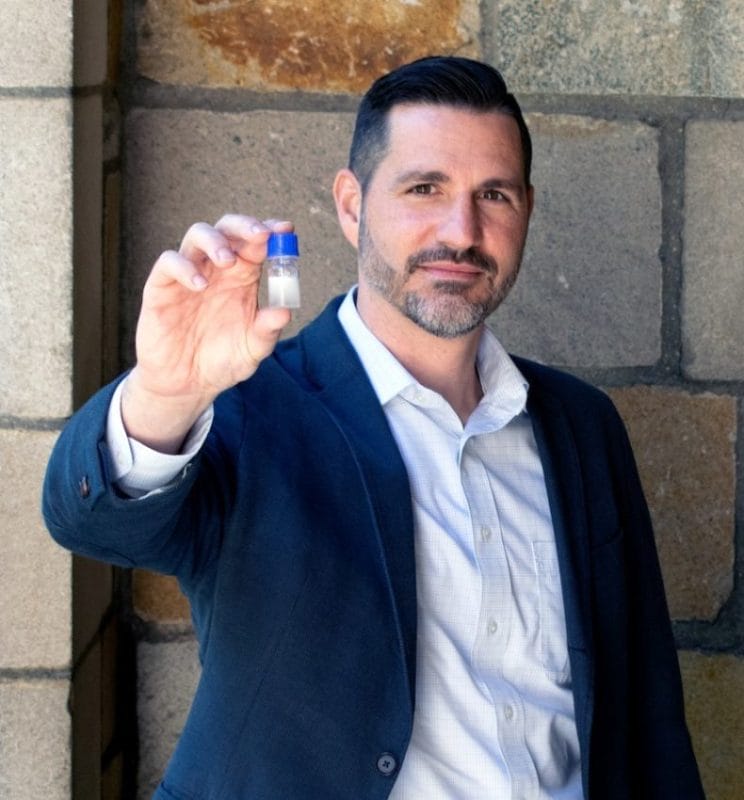Current Standards of Cancer Treatment
Previous cancer treatments have relied on surgery, chemotherapy, and radiation therapy. However, all of these procedures are often accompanied by extreme side effects, such as skin changes, blood clots, vomiting, and hair loss. This is because these treatments not only target cancer cells, they also damage the body’s healthy cells.
For example, in order to destroy cancerous tumors, chemotherapy is intended to attack rapidly dividing cells within the body. This includes both cancerous and non-cancerous cells, such as hair follicles and those lining the gut, producing some of chemotherapy’s more well-known side effects, such as alopecia and nausea.
Although these continue to be the main pillars of treatment, new developments within oncology have opened doors to new avenues of care. Immunotherapies are one of the most exciting new treatments making headway within the oncology industry. They work by harnessing and enhancing the natural powers of the immune system to work against the cancer by enabling it to recognize, target, and eliminate cancer cells throughout the body. The precise, targetable nature of immunotherapies often results in fewer side effects for patients as they are usually better tolerated by the body, whilst also producing great recovery results.
Immunotherapy: Precision Medicine in Action
Over the past decade, immunotherapies have produced fantastic results in the treatment of many types of cancer, including melanoma, lung, kidney, bladder, and lymphoma.
Immunotherapy can be administered alone, or in combination with other types of cancer treatments, and has shown success in 15 different variations, including lung cancer, head and neck cancer, bladder cancer, kidney cancer, and Hodgkin lymphoma. The average response rate of cancer patients to immunotherapy drugs is between 20 to 50 percent, however, oncologists believe that durable responses could increase as immunotherapy research advances, and researchers gain new insights into how the immune system and cancer cells interact. Rapidly establishing itself as the “fifth pillar” of cancer treatment, these immune-boosting drugs have demonstrated their ability to shrink and even eradicate tumors.
Immunotherapies rely on the body’s natural immune response to disease and infection. T cells are the naturally occurring defenders within the body, helping fight infections by destroying diseased or damaged cells, or recruiting other immune cells to attack. Unfortunately, these cells struggle to recognize cancerous tumors. This is where immunotherapies can help.
Immunotherapies enlist T cells to activate the immune system, strengthening a patient’s own defenses to attack cancer cells. However, T cells must first be harvested from a patient’s blood and genetically altered in order to recognize tumors as enemy cells. One example of an immunotherapy which shows extremely promising results in providing effective treatments for certain cancers is CAR T cell therapy.
CAR T cell Therapy
One specific variation of immunotherapy is autologous CAR T cell therapy, a powerful remedy which has begun to revolutionize cancer treatment, proving particularly effective on blood cancers such as leukemia and lymphoma.
This therapy involves genetically engineering a patient’s T cells to carry a receptor called a chimeric antigen receptor, or CAR. This protein, often combining portions of an antibody with parts of the T cell receptor, now provides the T cell with an advantage, giving them the ability to recognize, bind, and destroy cancer cells.
These CAR T cells are then multiplied in a lab into the millions, and reinfused back into the patient’s blood stream. When these cells encounter the protein it’s designed to recognize on the cancer cell, they immediately activate and destroy their target. In this way, the treatment acts as a living drug, genetically optimized and primed to target tumors within the body.
Research around the effectiveness of CAR T cell therapy is rapidly emerging. A new study by the American Society of Hematology has revealed that people receiving CAR T cell therapy demonstrated an improved quality of life six months post-treatment. 76 percent of patients treated within the study also achieved remission. This research demonstrates the transformative effect CAR T cell therapy is having on cancer treatments, and highlights the potential this science has to revolutionize the field of oncology.
The efficacy of CAR T cell therapy has been demonstrated, and so we are seeing the rapid integration of these treatments into clinical practice. Yet, the therapy can cost up to $500,000, making it virtually inaccessible to the majority of the population. This high cost is largely attributed to the outdated and ineffective methods of cell separation used within the field. The labor-intensive nature and lack of scalability of this process dramatically drives up the cost, meaning that on health insurance or public programs, only 1-2 patients can receive this treatment at a time at each hospital.
As a result, the industry is pushing to develop cell separation technologies that make treatments like CAR T cell therapy less expensive for patients. Not only that, the latest innovations also boost the therapy’s ability to improve quality of life, and ultimately cure patients.
Cell Separation: The Unexpected Key to Successful Treatment
All CAR T cell therapies require the isolation of T cells. The creation of CAR T cell therapy begins with collection of the patient’s blood and separation of the lymphocytes. These include T cells, B cells, and innate lymphoid cells, all of which are separated through apheresis (leukapheresis). It is this separation process which, if optimized, has the potential to revolutionize immunotherapy treatments for cancer patients.
Current cell separation methods are fundamentally flawed, yet, they are still used within the industry due to lack of innovation in the field. For example, Florescence-activated Cell Sorting (FACS) is a method that uses flow cytometry and fluorescent probes to sort and separate cells. Although a highly versatile technique which is adopted in many clinical and research labs, its processes are slow, expensive, and complex, with a low cell recovery rate averaging between 50 and 70 percent.
Similarly, Magnetic Activated Cell Separation (MACS), also known as Immunomagnetic Cell Separation or Magnetic Cell sorting, a technique whereby magnetic particles are used to isolate target cells from solutions, is also used in labs worldwide. This cell sorting technique is a much faster and simpler procedure than FACS and is often the preferred cell isolation method for common cell types. However, MACS often has significant hidden costs due to the expensive equipment and is difficult to scale due to its inability to facilitate multiple samples at the same time. Furthermore, this rough manufacturing process damages and dampens cell efficacy before they have even been reintroduced into the patient’s bloodstream. This cell stressing can make the resulting treatments less effective.
However, new technological breakthroughs within the field promise to transform this process, elevating cell separation techniques in order to provide cheaper and more effective treatments for cancer patients.
The Microbubble Breakthrough
Microbubble technology is offering a more simple approach to a nearly infinite range of applications, including cell separation. The natural properties of the microbubble are allowing practitioners to provide less-expensive and more powerful treatments for patients.
Microbubbles are miniature, gas-filled bubbles which allow for the gentle transportation of extremely small cells or particles. Using negative selection, microbubbles selectively attach to all cells in the sample, excluding the desired T cells. Due to their buoyancy, these microbubbles rise to the top of the solution, allowing them to be effortlessly removed along with the unwanted cells they are bound to. Consequently, T cells remain undisturbed at the bottom of the vessel, poised for collection and subsequent applications such as genetic alteration and therapy creation.
Utilizing microbubbles proves to be a streamlined and cost-efficient method for isolating cell populations. This approach, confined within a single vessel, simplifies the workflow significantly, requiring minimal manpower for processing large cell quantities. The entire process, taking only 60 minutes from initiation to completion, expedites the time between receiving the sample and administering the treatment.
Using gravity alone to separate cells, microbubbles minimize any sheer forces, preserving the quality and viability of the T cells. The exceptionally gentle workflow spares the cells from the harsh magnetic forces used during MACS, for example. The ability to rapidly scale this process is another huge advantage to the microbubble cell separation technique, enabling the simultaneous processing of multiple samples.
Increasing Access to Therapies for a Cancer-Free Future
Cell therapies are currently the best hope for cancer patients. Immunotherapy has already proven to be an effective treatment for patients with various types of cancers, making it the most promising new cancer treatment approach since the first chemotherapies were developed in the 1940s. However, these treatments must be made accessible to everyone in society living with cancer in order for us to declare this breakthrough a true success.
Often an overlooked area of science, the cell separation process in fact plays a vital role in the production of effective and affordable treatments for cancer patients. Current cell separation methods being used by oncology teams are only being used due to a lack of a better alternative. Microbubble technology is now providing an outdated industry with a less expensive and more effective methodology. One which, if adopted, has the potential to revolutionize treatment access and outcomes for all patients.
Editor’s Note: Dr. Brandon McNaughton, Chief Executive Officer and Co-Founder of Akadeum, discusses how altering cell separation practices can make cell therapies, such as CAR




